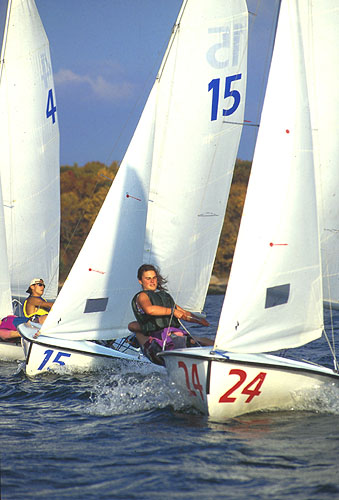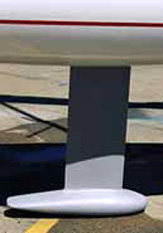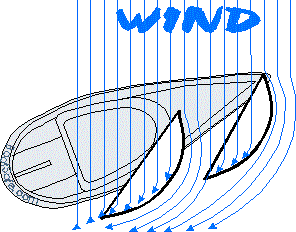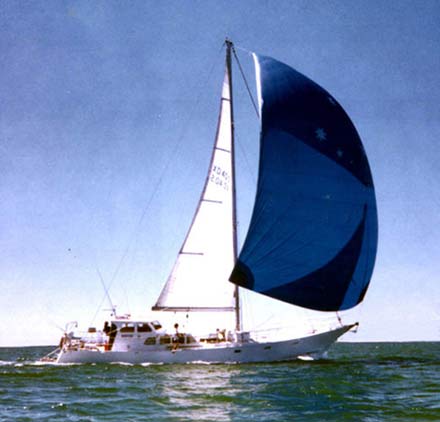 HOME |
|
|
|
What makes a yacht move? The wind, of course. But boats can't just be pointed where you want to go if you are using the wind to push you along. If the wind is coming directly from where you want to go, you need to aim as close as you can get to this direction, and zigzag your way there. This is called tacking. These boats are tacking into the wind. You can tell that because the sails are hauled in as close to the centre line of the boat as possible, and they are heeling over with the force of the wind. What is it that stops the boats heeling over so far that they capsize (tip over completely)? Of course, small yachts can capsize, and do so quite often. Bigger boats have a deep keel which has lead weights to balance the weight of the boat and mast and rigging above the water. |
|
The keel is also the thing that keeps the boat moving in a forward direction. If you did not have a keel or centerboard the boat would simply move sideways away from the wind. However, with a well-shaped keel the boat will sail mainly forward while sliding slightly to leeward (away from the direction the wind is blowing). The force works on the keel like a thumb on an orange seed. If you put an orange seed on a table and place your thumb on it and push down, it will squirt forward. The keel, which should be shaped similar to the orange seed, does the same thing when a sideways force is placed on it. |
|
|
|
The force that the wind transfers to the sails actually makes a boat move forward for much the same reason a plane flies. If you were to look down on a sailboat from a helicopter you would see what looks like an airplane's wing, except standing on end. The air moving across the sails, like air moving across an airplane wing, creates a force called lift. A small amount of this force aims aft and actually pushes the boat forward and some of the force is lost due to friction as it moves over the sail. However, most of the force is sideways which tends to make the boat move sideways away from the wind. The keel or centerboard keeps the boat from being pushed sideways by the wind. The resistance from the hull and the keel translate the lifting force to forward motion. |
|
It is much easier and more comfortable when the wind is coming directly from behind the boat. This is called running before the wind. The sails are let out as far as they can, nearly to 90 degrees out from the line of the hull. The boat does not heel over, because there is nothing pushing on it sideways. Unless there is a heavy sea, the boat just moves smoothly ahead. When the boat is running like this, you can put up an extra large sail called a spinnaker, which gives a bigger sail area for the wind to push against, and makes the boat move even faster. It goes up instead of the jib, or foresail. |
|



